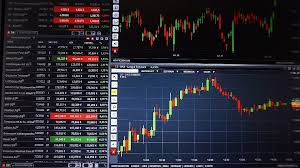
In the world of forex trading, the right indicators can make a significant difference in a trader’s success. forex trading indicators onlinetrading-cm.com provides valuable insights into how to navigate through various indicators effectively. With countless tools at your disposal, it can be overwhelming to decide which indicators truly add value to your trading strategies. This article will cover some of the most essential forex trading indicators, how they function, and their practical applications to help traders optimize their strategies and make informed decisions.
Understanding Forex Trading Indicators
Forex trading indicators are mathematical calculations based on the price, volume, or open interest of a currency pair. These indicators help traders identify potential entry and exit points in the market, as well as aid in forecasting price movements. By analyzing these indicators, traders can gain insights into market trends, reversals, and potential trading opportunities.
Types of Forex Trading Indicators
Forex trading indicators can broadly be categorized into two groups: leading indicators and lagging indicators. Leading indicators provide signals before a new trend begins, whereas lagging indicators confirm trends after they have already begun. Understanding the difference between these types of indicators is crucial for developing a well-rounded trading strategy.
Leading Indicators

Leading indicators give traders insights into potential future price movements. They are often used to identify new trend formations or reversals. Some popular leading indicators include:
- Relative Strength Index (RSI): This momentum oscillator measures the speed and change of price movements. It ranges from 0 to 100, with levels above 70 indicating overbought conditions and levels below 30 indicating oversold conditions.
- Stochastic Oscillator: This indicator compares a particular closing price of a currency pair to a range of its prices over a certain period. Values above 80 suggest that a currency is overbought, while values below 20 indicate oversold conditions.
- MACD (Moving Average Convergence Divergence): The MACD is a trend-following momentum indicator that shows the relationship between two moving averages of a security’s price. It’s often used to spot changes in momentum and the direction of price trends.
Lagging Indicators
Lagging indicators follow price movements and are best used to confirm trends. Some of the commonly used lagging indicators include:
- Moving Averages: A moving average smooths out price data by creating a constantly updated average price. Simple Moving Averages (SMA) and Exponential Moving Averages (EMA) are the two most common types.
- Bollinger Bands: This indicator consists of a middle band (SMA) and two outer bands that represent standard deviations away from the SMA. It helps traders identify volatility and potential overbought or oversold conditions.
- Average True Range (ATR): ATR measures market volatility by decomposing the entire range of an asset for that period. It helps traders determine appropriate levels for stop-loss orders and position sizing.
How to Use Forex Trading Indicators
Using indicators effectively requires a solid understanding of how they work and what they represent. Here are some practical tips for utilizing forex trading indicators in your trading strategies:

- Combine Different Indicators: Relying on a single indicator can lead to false signals. Combining different indicators, especially a mix of leading and lagging types, can enhance the reliability of your trading signals.
- Understand Market Context: Indicators do not operate in a vacuum. It’s essential to consider the broader market context and economic news that may impact currency movements. Indicators should be used in conjunction with fundamental analysis.
- Backtesting: Before applying any indicator in live trading, backtest it using historical data to evaluate its effectiveness. This helps understand its strengths and weaknesses in different market conditions.
- Stay Disciplined: Indicators are tools meant to aid your decision-making process, but maintaining discipline in your trading plan is crucial. Stick to your strategy and avoid emotional decision-making driven by market fluctuations.
Common Mistakes to Avoid
Using forex trading indicators can be beneficial, but common mistakes can hinder traders’ progress. Here are some pitfalls to avoid:
- Overloading on Indicators: Using too many indicators can lead to confusion and indecision. It is better to select a few reliable indicators and use them effectively than to overwhelm yourself with information.
- Ignoring Time Frames: Different indicators may give varied signals depending on the time frame used. Always be aware of the timeframe you are trading on and the indicators you are applying to avoid misleading signals.
- Emotional Trading: Letting emotions guide your trading decisions can be detrimental. Stick to your trading plan and the insights provided by your indicators rather than reacting impulsively to market movements.
Conclusion
Forex trading indicators are powerful tools that can significantly enhance your trading strategies when used correctly. Understanding the differences between leading and lagging indicators, effectively combining them, and avoiding common mistakes can lead to more informed and strategic trading decisions. Whether you are a beginner or an experienced trader, mastering these indicators can help you navigate the complex world of forex trading with increased confidence and precision.
As you continue to explore the realm of forex trading, remember that continuous learning and adaptation are key players in achieving success. Incorporate these indicators into your trading toolkit, and you may find yourself better equipped to seize opportunities in the ever-changing forex market.

